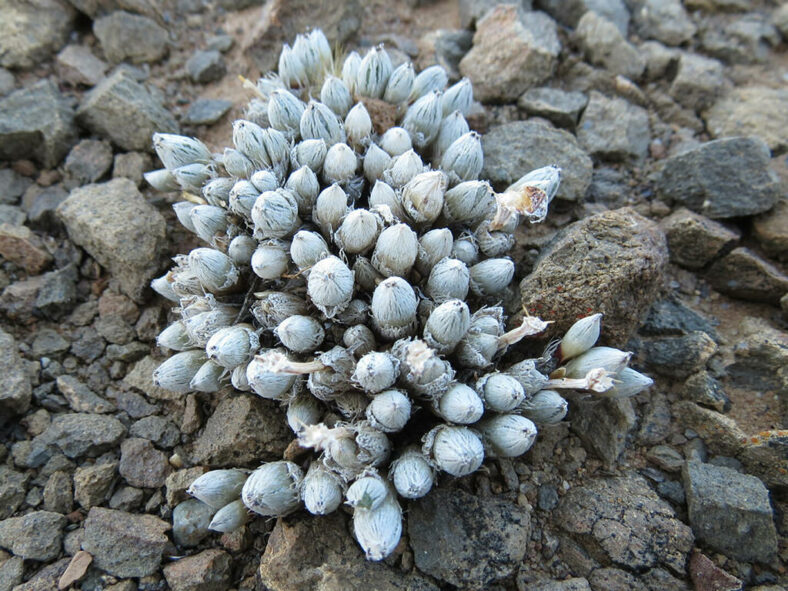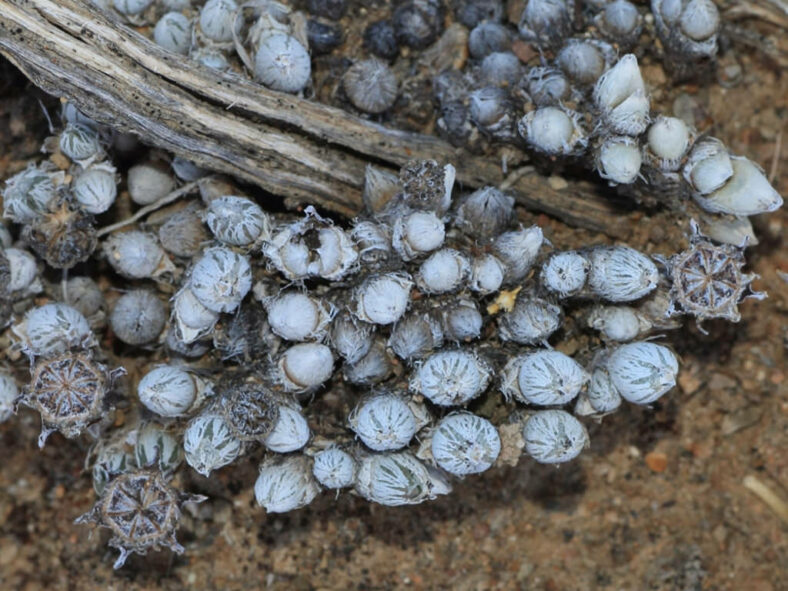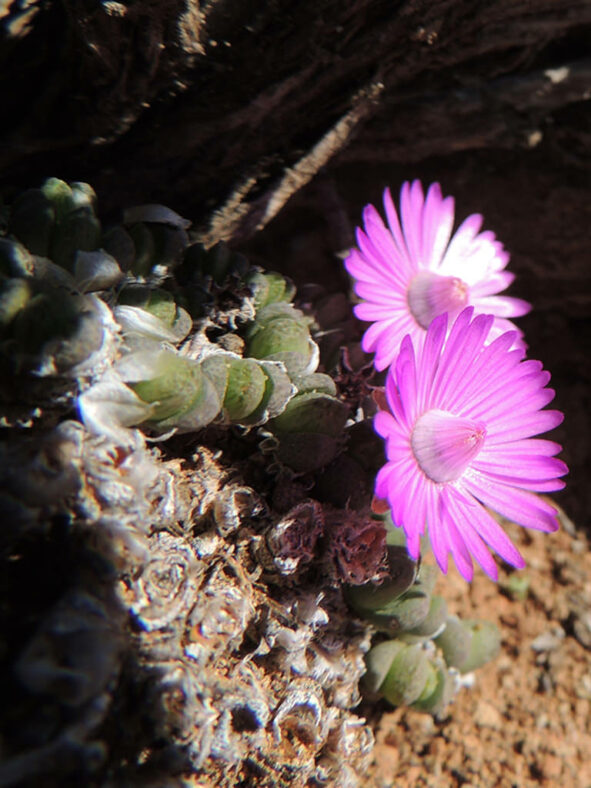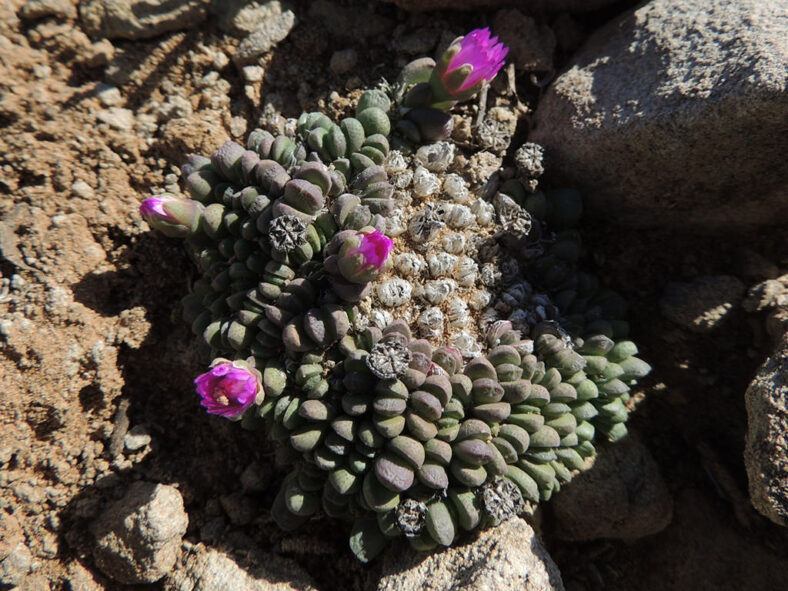Antimima pygmaea is the most remarkable and interesting species of the genus. It was first described as Mesembryanthemum pygmaeum by Adrian Hardy Haworth in 1819. Heidrun Hartmann gave it its current name in 1998
Scientific Name
Antimima pygmaea (Haw.) H.E.K.Hartmann
Common Name (s)
Pygmy Matfig
Synonym(s)
Mesembryanthemum pygmaeum, Ruschia pygmaea
Scientific Classification
Family: Aizoaceae
Subfamily: Ruschioideae
Tribe: Ruschieae
Genus: Antimima
Etymology
The specific epithet "pygmaea" (pronounced "POO-mil-uh") means "of or pertaining to a pygmy or dwarf; short; of reduced stature" and refers to the size of this species, which is one of the smallest.
Origin
Antimima pygmaea is native to South Africa. It grows in shale or tillite outcrops on flats from Worcester to Matjiesfontein in Western Cape province.
Description
Antimima pygmaea is a succulent shrublet that is more visually appealing during dormancy than when actively growing. It can reach a diameter of 6 inches (15 cm) and form a dense mat of leaf pairs in two distinct forms. This plant produces only two pairs of leaves each year on each branch. The first pair is fused almost to the tips, creating a conical body that dries into a white sheath around the new pair of free, widely spreading leaves.
During the winter, Antimima pygmaea produces solitary flowers on pedicels raised well above the plant bodies. The flowers can reach a diameter of 0.7 inches (1.8 cm). The fruits are 6-locular capsules.

How to Grow and Care for Antimima pygmaea
Light: Antimima pygmaea requires bright light but not too much direct sunlight. So, a windowsill that receives 4 to 5 hours of direct sunlight in the morning and partial shade in the afternoon will be a perfect spot for indoor growing.
Soil: The plant thrives in porous soil, allowing the water to drain away quickly. Therefore, use commercial soil for succulents or make your own well-draining mix.
Temperature: High temperatures are not a problem as long as there is plenty of fresh air, but this plant is not cold-hardy. It grows best in USDA Plant Hardiness Zones 9b to 11b, with average minimum winter temperatures ranging from 25°F to 50°F (-3.9°C to 10°C).
Watering: When, how much, and how often to water is crucial to keep Antimima pygmaea healthy. During its dormant period, typically in the summer, it requires minimal or no watering. From fall to spring, water it thoroughly but allow the soil to dry between waterings.
Fertilizing: As long as you repot this plant every two years, it does not need fertilizer.
Repotting: Even if your plant can stay happy in the same pot for years, you can repot it occasionally to give it more space anytime during the growing season. However, the best time is at the beginning of the growing season.
Propagation: One way to propagate this plant is by stem cuttings during the growing season. Another option is to start it from seeds by sowing them in well-draining soil during the fall.
Learn more at How to Grow and Care for Mesembs.
Toxicity of Antimima pygmaea
Antimima pygmaea is considered non-toxic and safe around kids and pets.
Links
- Back to genus Antimima
- Succupedia: Browse succulents by Scientific Name, Common Name, Genus, Family, USDA Hardiness Zone, Origin, or cacti by Genus
Photo Gallery
Click on a photo to see a larger version.


